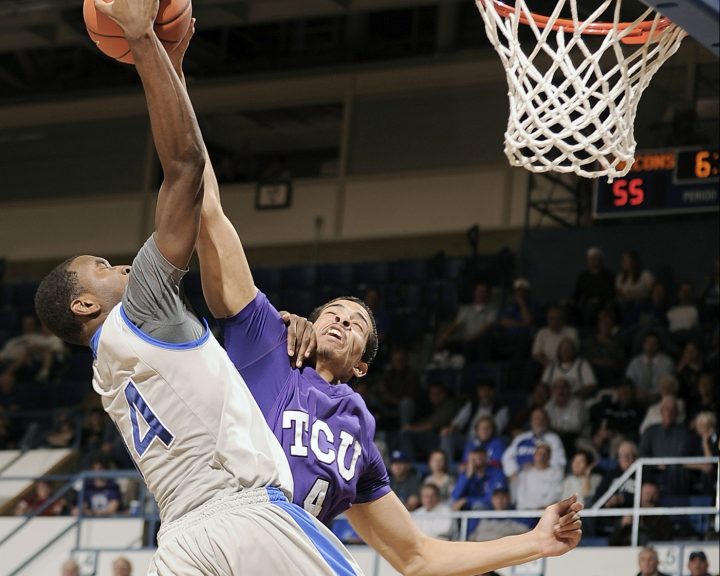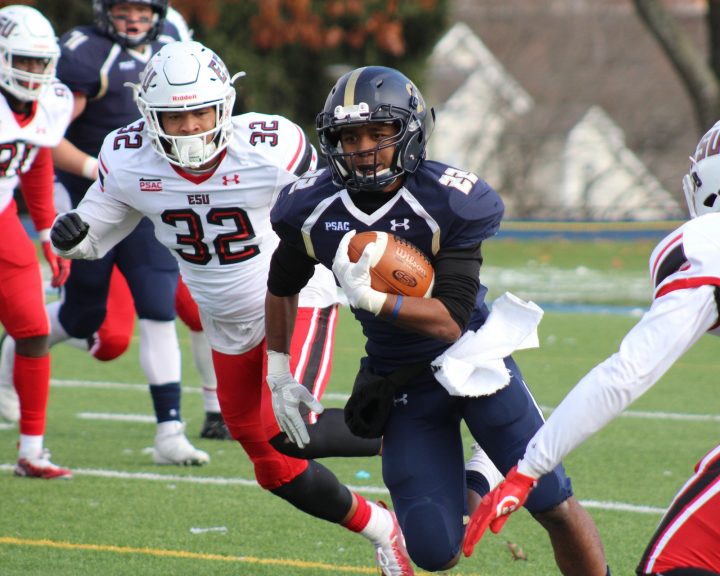Small sided games (SSGs) are used in soccer, basketball, rugby, and cricket to develop conditioning, repeated sprint ability, technical skills, and tactical abilities. Basically these involve games with a smaller number of players, there may be a smaller playing area, and the rules may be modified to encourage certain skills or to induce a specific training effect. These might represent a specific metabolic conditioning tool and may be extremely useful in-season training especially due to the fact that there is never enough time for training during the season.
This sounds really good and like it’s a great way to use one tool to accomplish many things. This post is going to provide a brief review on SSGs. As a coach, I’m interested in a few questions with these:
- Do they improve conditioning?
- Do they improve sprinting?
- Is there a most effective way to conduct them?
SSGs and Conditioning:
SSGs look promising in terms of developing conditioning. For example, in a study published in 2013, Radziminski et al compared the impact of sprints to SSGs on under 16 year-old soccer players. The sprinting group performed sprints twice a week, with five repetitions of four minutes of “sprinting.” The SSG group performed games with three players on each side, on an 18×30 meter field, with five sets of four-minute games. Everyone had two minutes of recovery between each sprint or between each game. At the end of eight weeks, the SSG group significantly increased maximal oxygen consumption and soccer-specific technical skills. The sprint group was faster on sprints, but not by a statistically significant amount. Dellal et al (2012) found that SSGs can increase aerobic capacity, anaerobic fitness, and the ability to improve high-intensity actions with directional changes.
This is a really important question to address. If they don’t improve conditioning, then we need to find another tool to use to address this when the athletes are in-season. Now, based upon the two studies it looks pretty good for SSGs and conditioning – at least in soccer players.
SSGs and Sprinting:
The problem with sprinting is that to get better at it, you have to train it. The Radziminski et al study mentioned above isn’t specifically training sprinting for either group that they studied. By definition, SSGs are going to be a little more random and depending upon how the game develops they may or they may not incorporate more sprints (Gabbett and Mulvey 2008). If they don’t, then this quality isn’t going to be trained. Now, there are things that can be done to increase the number of sprints in a SSG. For example, Casamichana and Castellano (2010) studied youth male soccer players. They studied SSGs on a small field, a medium field, and a large field. What they found was that the large and medium fields saw the most distance covered by the athletes, the fastest speeds, and a greater number of sprints. In other words, SSGs can be designed to develop sprinting but if there is not a deliberate focus on this then this quality might not receive much training.
How to Conduct Effectively:
There are no magic bullets with sports, every tool has limitations. With SSGs, it depends on what you want to accomplish from them. Let’s look at the impact of several variables:
- Number of players: Fewer players means a higher intensity and generally requires more ball contacts and technical skills from the athletes (Klusemann et al, 2012 and Owen et al, 2011).
- Field/court size: The court/field size has an impact on intensity, sprinting, and technical skills. Smaller courts and fields result in more technical skills and motor behaviors. Larger fields and courts mean greater intensity, distances covered, and sprinting (Casamichana and Castellano 2010, Klusemann et al 2012).
Among other things I coach basketball and baseball. As a basketball coach this is a really attractive tool. It would allow me to maintain sport-specific endurance, work on sport-specific skills, as well as game situations (i.e. I can knock several things out at one time, which is always a plus). What is challenging is that my situation as a basketball coach is not the same situation as a researcher’s. For example, I have one court to practice on and twelve players. So if I run a full-court small sided game with two players against two players, then eight of my players are inactive. In that situation, it might make more sense to play three on three and then sub in the other players after the desired time interval has passed. In other words, I cannot really duplicate what was done in a study so my results may not be the same as the researcher’s.
As a strength and conditioning coach, it is very difficult to quantify and plan this type of training, which makes planning difficult. Among other things the movements, situations, and technical skills required from a few minutes of a game can vary from one game to the next. This makes it challenging to plan for a number of sprints, endurance work, and balance this out with other modes of training. From a strength coach’s perspective, this makes the most sense to be the metabolic conditioning for in-season training (and possibly being the speed and agility work as well). This would allow an off-season focus on isolated speed, agility, and conditioning sessions to hone those skills.
References:
- Ade, J.D., Harley, J.A., and Bradley, P.S. (2014). Physiological response, time-motion characteristics, and reproducibility of various speed-endurance drills in elite youth soccer players: Small-sided games versus generic running. International Journal of Sports Physiology and Performance, 9: 471-479.
- Aslan, A. (2013). Cardiovascular responses, perceived exertion and technical actions during small-sided recreational soccer: Effects of pitch size and number of players. Journal of Human Kinetics, 38: 95-105.
- Casamichana, D. and Castellano, J. (2010). Time-motion, heart rate, perceptual and motor behavior demands in small-sided soccer games: Effects of pitch size. Journal of Sports Sciences, 28(14): 1615-1623.
- Dellal, A., Varliette, C., Owen, A., Chirico, E.N., and Pialouz, V. (2012). Small-sided games versus interval training in amateur soccer players: Effects on the aerobic capacity and the ability to perform intermittent exercise with changes of direction. Journal of Strength and Conditioning Research, 26(4): 976-981.
- Gabbett, T.J. and Mulvey, M.J. (2008). Time-motion analysis of small-sided training games and competition in elite women soccer players. Journal of Strength and Conditioning Research, 22(2): 543-552.
- Hoffmann Jr., J.J., Reed, J.P., Leiting, K., Chiang, C-Y., and Stone, M.H. (2014). Repeated sprints, high-intensity interval training, small-sided games: Theory and application to field sports. International Journal of Sports Physiology and Performance, 9: 352-357.
- Katis, A. and Kellis, E. (2009). Effects of small-sided games on physical conditioning and performance in young soccer players. Journal of Sports Science and Medicine, 8: 374-380.
- Klusemann, M.J., Pyne, D.P., Foster, C., and Drinkwater, E.J. (2012). Optimising technical skills and physical loading in small-sided basketball games. Journal of Sports Sciences, 30(14): 1463-1471.
- Owen, A.L., Wong, D.P., McKenna, M., Dellal, A. (2011). Heart rate responses and technical comparison between small- vs. large-sided games in elite professional soccer. Journal of Strength and Conditioning Research, 25(8): 2104-2110.
10. Radziminski, L., Rompa, P., Barnat, W., Dargiewicz, R., and Jastrzebski, Z. (2013). A comparison of the physiological and technical effects of high-intensity running and small-sided games in young soccer players. International Journal of Sports Science and Coaching, 8: 455-466.



